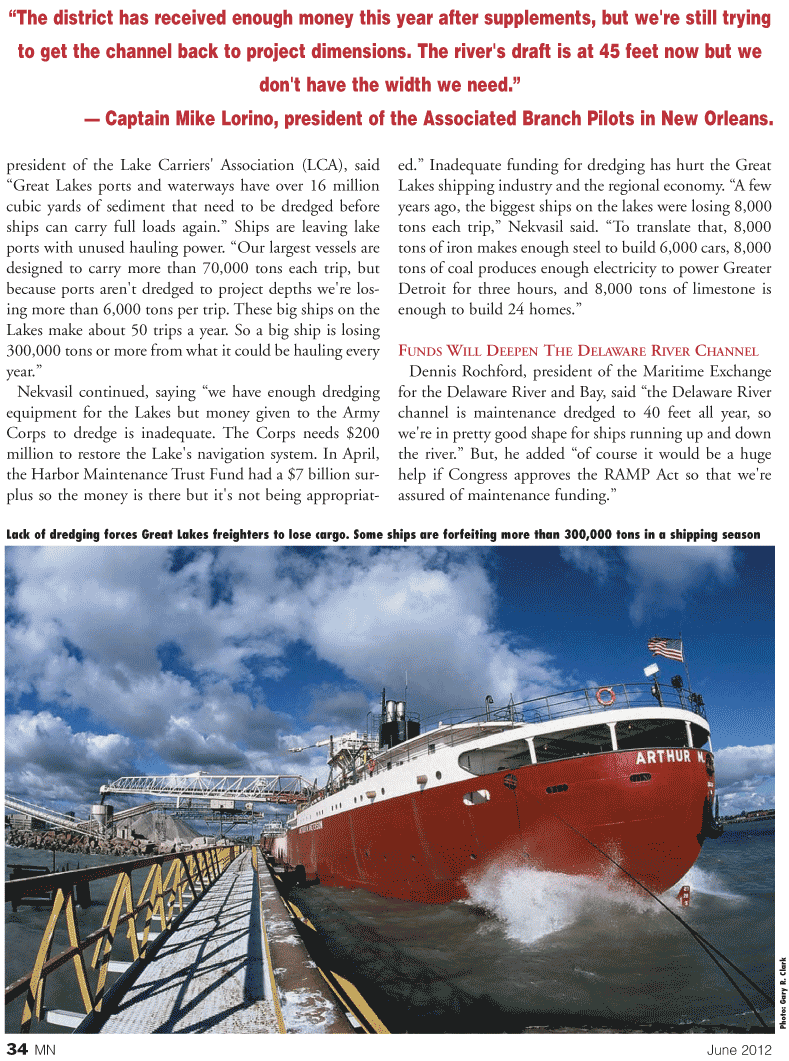
Page 34: of Marine News Magazine (June 2012)
Dredging & Marine Construction
Read this page in Pdf, Flash or Html5 edition of June 2012 Marine News Magazine
president of the Lake Carriers' Association (LCA), said Great Lakes ports and waterways have over 16 million cubic yards of sediment that need to be dredged before ships can carry full loads again.? Ships are leaving lake ports with unused hauling power. Our largest vessels are designed to carry more than 70,000 tons each trip, but because ports aren't dredged to project depths we're los- ing more than 6,000 tons per trip. These big ships on the Lakes make about 50 trips a year. So a big ship is losing 300,000 tons or more from what it could be hauling every year.? Nekvasil continued, saying we have enough dredging equipment for the Lakes but money given to the Army Corps to dredge is inadequate. The Corps needs $200 million to restore the Lake's navigation system. In April, the Harbor Maintenance Trust Fund had a $7 billion sur- plus so the money is there but it's not being appropriat- ed.? Inadequate funding for dredging has hurt the Great Lakes shipping industry and the regional economy. A few years ago, the biggest ships on the lakes were losing 8,000 tons each trip,? Nekvasil said. To translate that, 8,000 tons of iron makes enough steel to build 6,000 cars, 8,000 tons of coal produces enough electricity to power Greater Detroit for three hours, and 8,000 tons of limestone is enough to build 24 homes.?FUNDSWILLDEEPEN THEDELAWARE RIVERCHANNELDennis Rochford, president of the Maritime Exchange for the Delaware River and Bay, said the Delaware River channel is maintenance dredged to 40 feet all year, so we're in pretty good shape for ships running up and down the river.? But, he added of course it would be a huge help if Congress approves the RAMP Act so that we're assured of maintenance funding.? Photo: Gary R. ClarkLack of dredging forces Great Lakes freighters to lose cargo. Some ships are forfeiting more than 300,000 tons in a shipping seasonThe district has received enough money this year after supplements, but we're still trying to get the channel back to project dimensions. The river's draft is at 45 feet now but we don't have the width we need.? ? Captain Mike Lorino, president of the Associated Branch Pilots in New Orleans. 34MNJune 2012

 33
33

 35
35
